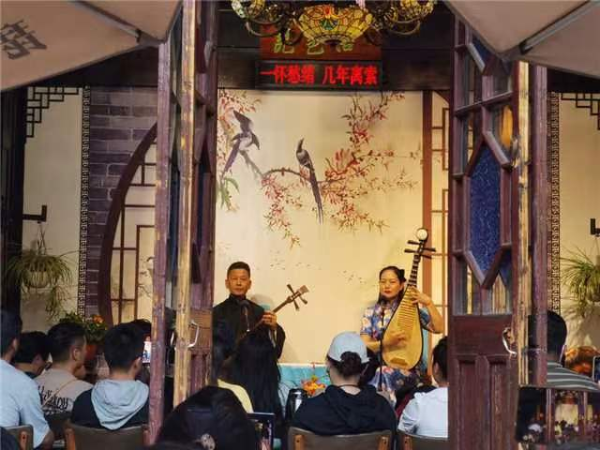Suzhou makes best use of ancient and modern
By WANG KAIHAO in Suzhou, Jiangsu | China Daily Global | Updated: 2021-05-13 08:53

Community rebirth
In September, Suzhou was listed by the National Cultural Heritage Administration as one of six national-level exemplary areas for the protection and use of cultural relics.
In late March, the city government released a new plan for further conserving the old city, focusing on the area within the moats.
Huang Aijun, the Party chief of Gusu, said: "We will continue our efforts to comprehensively and dynamically protect our heritage. Conserving the area's history will be combined with urban construction."
Renovation work on the main ancient neighborhoods will be completed within three years, Huang said, and more projects will follow to better protect the former residences of notable figures from the past and to promote landmark sites.
Suzhou, a major hub for writers and academics in ancient times, once contributed a long list of notable officials through the national exam system.
Pan Shi'en (1770-1854) was a prime example. Standing out for his academic performance, and gradually becoming one of the country's top officials, Pan served four emperors during the Qing Dynasty (1644-1911).
Renovated in 2013, one of his former residences was turned into a museum for zhuangyuan-candidates who took top place in annual national-level recruitment exams for officials.
The site, which boasts a wealth of cultural relics, is not only dedicated to Pan, but to a group of successful figures like him who reached their ultimate goal in life-to serve the country. In ancient China, 50 people from Suzhou gained the title of zhuangyuan, the most among all cities in the country.

The Suzhou government's new plan will see the museum function as a venue to promote zhuangyuan-related culture. Renovation work will also be carried out on the residences of others who excelled in the exam.
Zhou Liping, an official from Pingjiang subdistrict, who is in charge of cultural development and revitalizing ancient neighborhoods, said such work involves far more than turning old buildings into showcases for history.
"The buildings are alive only if they are given new roles. Their exteriors should remain intact, but the interiors have to be adapted to the needs of modern life, like hotels, bookstores and cafes," Zhou said.
Pingjiang Road, an ancient area centered along a 1.6-km-long main lane, boasts a long history, typified by its architecture.
The area has become one of Suzhou's main tourism attractions in recent years, but visitors strolling its streets are probably unaware of the efforts being made to restore some of its past glory.
Before restoration work on Pingjiang Road began in the 2000s, the area was full of dilapidated houses, Zhou said.
Although refined artistic taste is included in the refurbishment plan, as much historical detail as possible has been retained.
For example, in turning a butcher's shop into a club for kunqu (the oldest surviving form of Chinese folk opera, which originates in Suzhou), the planks in the front door were retained. The planks were used to secure the door when the shop was closed.
Bars, karaoke lounges and booths selling street food have become widespread in many revitalized ancient streets in China, but Pingjiang Road is an exception, having little room for them.
"It's wrong to just relocate locals and let shopkeepers from elsewhere run businesses here," Zhou said. "Native residents play a key role in boosting their home community."
Wu Liangying grew up on Pingjiang Road. Once an established performer of pingtan-an indigenous type of singing from Suzhou-Wu, who is in her 50s, chose to return to her home neighborhood from elsewhere in the city in 2017.
She opened a teahouse in a renovated villa built in the 1920s, where she holds daily afternoon pingtan performances. Tickets for a show, which include a cup of tea, cost 38 yuan ($5.90).

"There are plenty of opportunities to seek a new career in other cities, but like many others, I choose to stay (in Suzhou). Life here is comfortable and we cherish the psychological support given by this area and its culture," she said.
Wu, who has uploaded clips of her performances in the teahouse to the Douyin short-video platform, where she has more than 110,000 followers, understands that new methods have to be adopted to promote Suzhou's traditional culture.
























